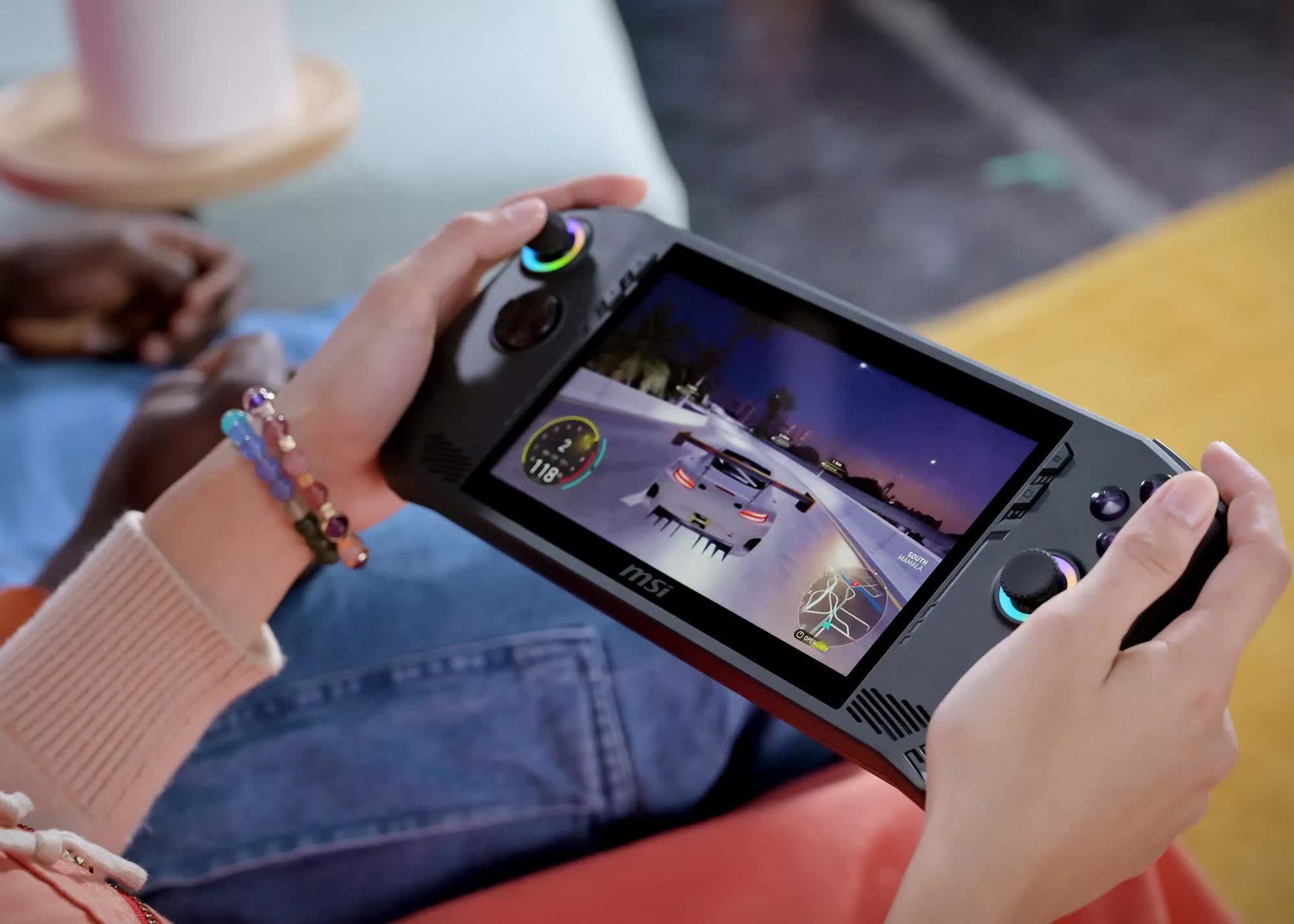Rumor mill: AMD is set to release the successor to the Asus ROG Ally's Z1 Extreme SoC next year, heralding a new generation of handheld gaming PCs. Although the chipmaker hasn't revealed the hardware specs, a new report from a known tipster indicates that AMD is preparing three variants. Only one uses the company's new Zen 5-based mobile architecture, codenamed Strix Point.
Correction / Update: The tipster who shared information on the AMD Ryzen Z2 series has revised his interpretation of the flagship chip's specs. The Z2 Extreme is now expected to feature 16 RDNA 3.5 compute units rather than 12, indicating that it is the same Radeon 890M used in the Ryzen AI HX 370 mobile SoC. However, the Z2 Extreme includes only eight cores in a 3+5 hybrid core configuration instead of the HX 370's 12. Like other recent AMD mobile processors, the Z2 is expected to feature 16MB of L3 cache.
In a now-deleted Bilibili post, prominent leaker Golden Pig Upgrade recently shared details on an upcoming lineup of mobile AMD processors for handheld gaming PCs. The three SoCs will feature integrated GPUs with 12 compute units, each employing a different Radeon graphics architecture.
At IFA 2024 in September, AMD confirmed plans to release the Ryzen Z2 Extreme in 2025, a follow-up to the Z1 found in the Asus ROG Ally handheld gaming PC. While the company hasn't revealed specifics, it is collaborating with Microsoft and multiple hardware vendors. Asus, Zotac, GPD, Dell, Lenovo, and other companies recently revealed portable devices based on Ryzen SoCs.
Z2E 12CU RDNA3.5 (Strix Point)
– HXL (@9550pro) October 22, 2024
Z2 12CU RDNA3 (Hawk Point)
Z2G 12CU RDNA2 (Rembrandt)https://t.co/4DCn5PTeTY
According to Golden Pig, the Z2 Extreme is the flagship of a series of Z2 chips and the only variant based on Strix Point, AMD's latest mobile architecture, which incorporates Zen 5 and RDNA 3.5. The Z2 Extreme features 12 RDNA 3.5 CUs and is thus likely based on the Radeon 880M.
Team Red initially planned to produce a Z2 Extreme X with 16 RDNA 3.5 CUs, probably using the 890M, but canceled it. Benchmarks have shown that the 890M would substantially outclass currently available Windows handhelds, with performance similar to a desktop GeForce GTX 1070 or Radeon RX 580. GPD released a pocket PC featuring the chip earlier this year, proving it can fit into a handheld form factor.
Meanwhile, the standard Ryzen Z2 includes 12 RDNA 3 CUs on a Hawk Point SoC. It might be a rebranded Z1 Extreme, but the upgrade from Phoenix to Hawk Point suggests the addition of an NPU. AMD plans to use NPUs for machine learning-based resolution upscaling, which can improve performance and battery life. The weakest Z2 member, the Z2G, features 12 RDNA 2 CUs on an SoC from the older Rembrandt architecture.
Handheld PC vendors will soon have plenty of options for SoCs. Aside from the three rumored Z2 variants, they could still opt for the more powerful 890M, and Intel is trying to enter the growing market with its Lunar Lake chips.
The Intel Core Ultra 7 258V's iGPU trounced the 890M in a low-wattage benchmark from Geekerwan earlier this month. An upgraded version of the MSI Claw handheld with Lunar Lake is set for a Q4 2024 launch.
